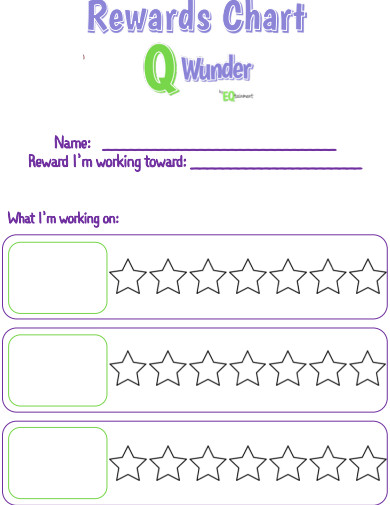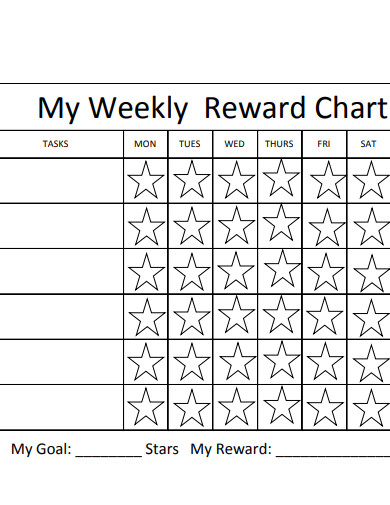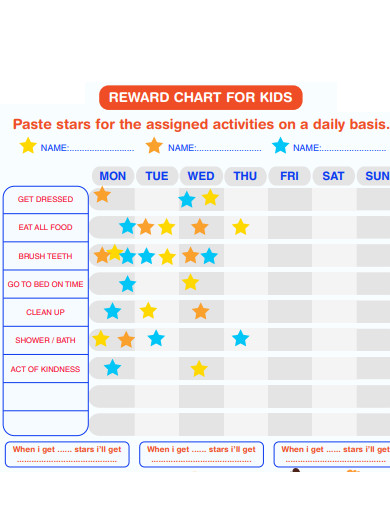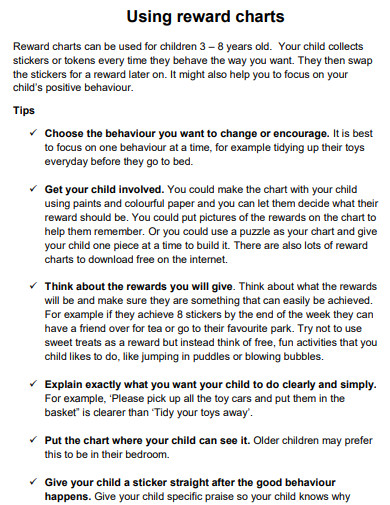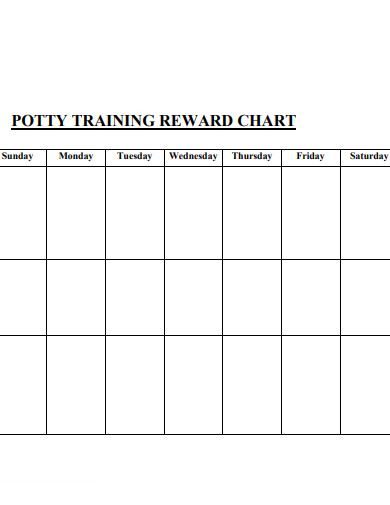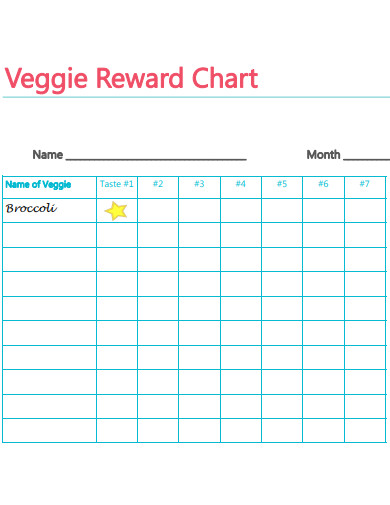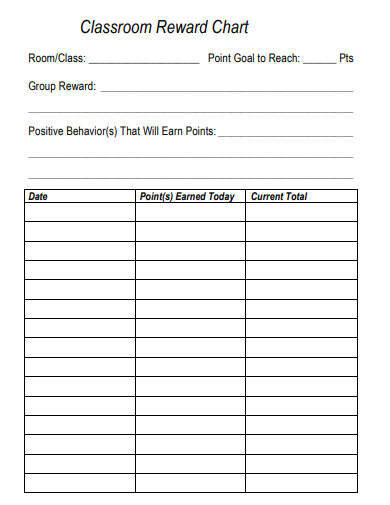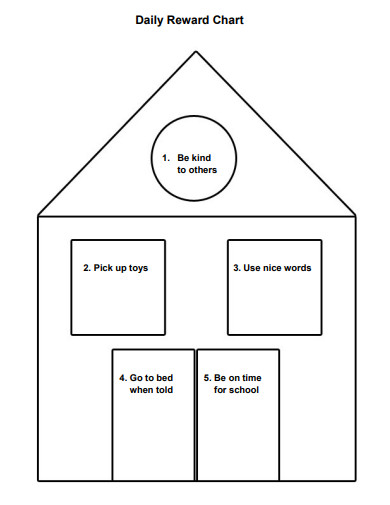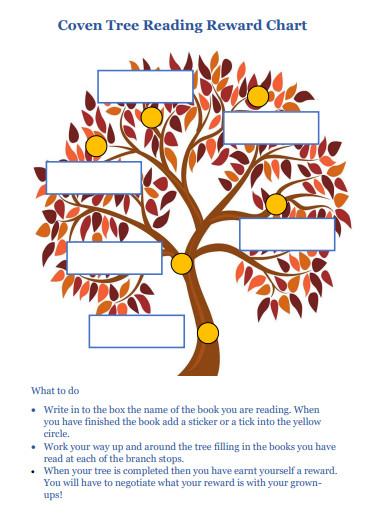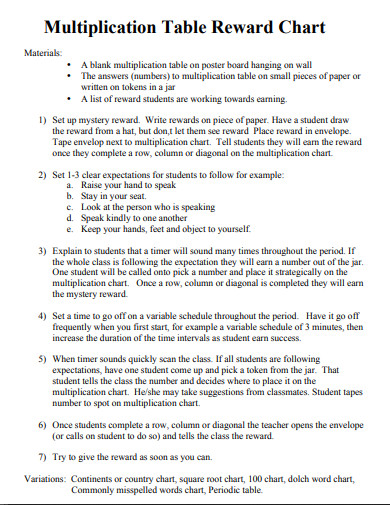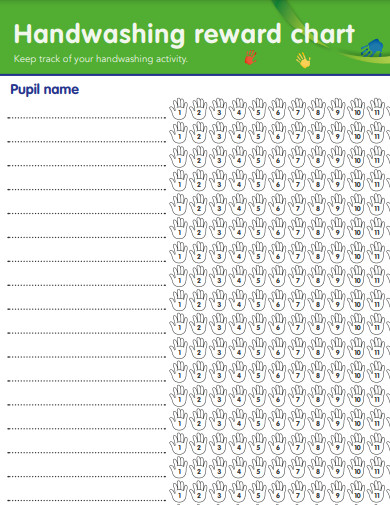One way to use a reward chart is to divide it into sections, with each section representing a specific goal or task. The child can earn stickers, points, or other markers for completing each task, and when they have accumulated a certain number of stickers or points, they can receive a reward. Rewards might include something as simple as praise and encouragement, or something more tangible like a small toy or an outing.
10+ Reward Chart Samples
1. Reward Chart
2. Weekly Reward Chart
3. Reward Chart For Kids
4. Using Reward Charts
5. Potty Training Reward Chart
6. Veggie Reward Chart
7. Classroom Reward Chart
8. Daily Reward Chart
9. Tree Reading Reward Chart
10. Multiplication Table Reward Chart
11. Handwashing Reward Chart
What Is a Reward Chart?
A reward chart is a tool that is used to encourage positive behavior in children. It is a visual representation of the goals that a child is working towards, and the rewards they will receive when they meet those goals. The chart is typically divided into sections, with each section representing a specific goal or task. The child can earn stickers, points, or other markers for completing each task, and when they have accumulated a certain number of stickers or points, they can receive a reward. Reward charts can be used to encourage a wide range of behaviors, such as doing homework, cleaning up their room, or behaving well in public.
How to Make a Reward Chart
One way to use a reward chart is to divide it into sections, with each section representing a specific goal or task. The child can earn stickers, points, or other markers for completing each task, and when they have accumulated a certain number of stickers or points, they can receive a reward. Rewards might include something as simple as praise and encouragement, or something more tangible like a small toy or an outing. To make a reward chart, you will need:
Step 1- Divide the Sheet of Paper
Divide the paper into sections, with each section representing a specific goal or task that the child is working towards. At the very top of each section, write the name of each objective or assignment.
Step 2- Determine the Rewards
Determine the prizes that the child will receive for successfully finishing each activity, and write them down next to the activities that they belong to. Determine how you will keep track of your success, whether it be via the use of points or stickers. Hang the reward chart in a prominent area where the child can see it, such as on the front of the refrigerator or in the child’s room.
Step 3- Review the Goals
Discuss the child’s expectations with them and go over the goals and the prizes that will be given to them if they meet those goals. If you want to keep tabs on the child’s development, you can reward them with a sticker, a point, or some other kind of marking when they finish each activity.
Step 4- Continue Creating the Reward
When the child has accumulated a certain number of stickers or points, provide them with the reward that corresponds to that task. Continue using the reward chart on a regular basis to encourage positive behavior.
FAQs
What types of behaviors can a reward chart be used to encourage?
A reward chart can be used to encourage a wide range of behaviors, such as doing homework, cleaning up their room, behaving well in public, or following rules.
How often should a reward chart be used?
It is important to be consistent in using the reward chart. This might mean using it every day, or several times a week. The frequency will depend on the child’s age and the specific behaviors that you are trying to encourage.
How do I choose rewards for a reward chart?
It is important to choose rewards that are meaningful and motivating to the child. This might involve asking the child what they would like as a reward, or finding out what interests them and using those interests as the basis for rewards.
Using a reward chart can be especially effective for children who may struggle with self-regulation or who have difficulty with impulse control. It can help to give them a sense of control over their own behavior and provide them with a visual representation of the goals they are working towards. Additionally, reward charts can be a way for parents and caregivers to show children that their efforts and achievements are valued and appreciated. This can help to build self-esteem and a sense of accomplishment in children.
Related Posts
FREE 6+ Banking Ombudsman Complaint Forms in PDF
FREE 12+ Sample Classroom Management Plan Templates in PDF ...
FREE 12+ Sample Behavior Contracts in PDF MS Word | Excel ...
FREE 9+ Tooth Fairy Receipt Samples & Templates in PDF
FREE 12+ Price Earnings Ratio Samples in PDF MS Word
FREE 10+ Sample Bridge Score Sheets in PDF
FREE 11+ Sample HR Resource Templates in PDF
FREE 12+ Sample Thank-You Letter to Employees in MS Word ...
FREE 14+ Behaviour Contract Templates in PDF MS Word | Pages
FREE 7+ Sample Weekly Workout Plan Templates in MS Word PDF
FREE 9+ Kid's Chore Schedule Templates in PDF MS Word
FREE 5+ Sample Sales Trackings in MS Word PDF
FREE 10+ Sample Cost Benefit Analysis Templates in PDF MS ...
FREE 8+ Amazing Circle Templates in PDF PSD
FREE 12+ Sample Reading Log Templates in Pages PDF | MS Word

